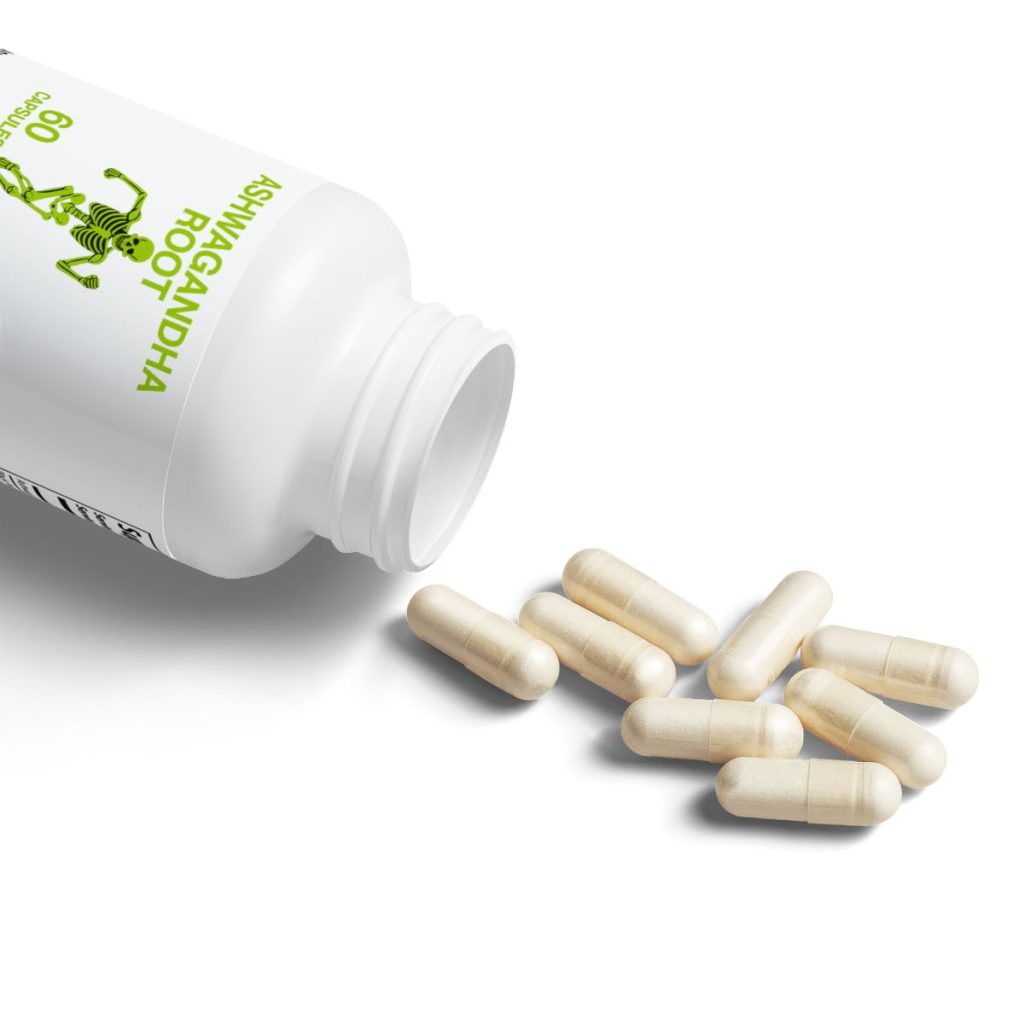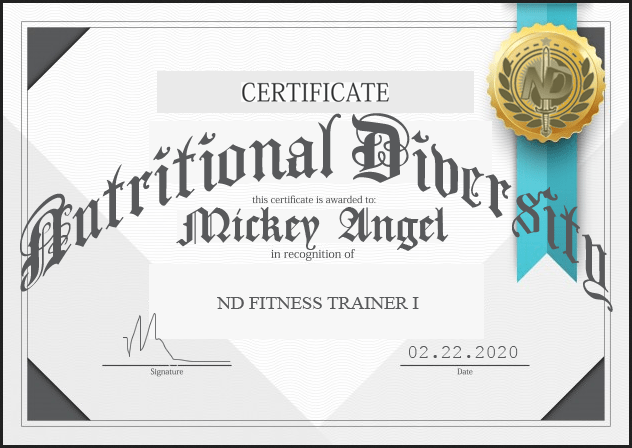Special Elements
Best Basil Rankings, Benefits, Side Effects & Experience
‘Basil’ (/ˈbæzəl/, also US: /ˈbeɪzəl/;[2] Ocimum basilicum), also called great basil, describes a large family of superfood herbs of the family Lamiaceae (mints).
It is also known as the “king of herbs” and the “royal herb,” the name basil is rooted in her Greek name, and this herb was discussed thoroughly by Ancient Greek authors such as Theophrastus.
There are 160 different varieties of basil cultivated today with new cultivars added yearly. This does not include the many wild strains of this plant found easily throughout the world.
The Strength of Basil, The King of Herbs is remarkable both in taste and in effect, and also in nutritional value.
We have a wild strain of basil here that is a vigorous grower setting in around new stuff we plant all on its own, making it a lucky tropical permaculture acceptance; that we appreciate very much along with our normal, natural soil-based, mixed-bag production terraces.
It seems to like to grow in around fresh cut, not so much out in the jungle almost like a gift directly to the gardener from nature.
The mood-enhancing abilities of basil, with the abundance of wild basil we have at our Farm (in pots), and its historical, well-covered king’s association, make it a ‘must-be for us.
She herself sort of told me in a way that she was called to my original thirty picks way back at the beginning of things. I am glad I have this work even from then and in the roughest form to remind me.
In this initial recommended plant foods library, I have been again and again moved specifically to honor my basil blessings.
History, Mythology & Astrology of Basil is remarkable and in the astounding connections traceable to the herb could lie a King’s map to strength and peace, the most noted essences of the specie.
Mythology, or Bio-dynamics? Interesting remains of the story and value of basil from the cultures who have used the herb before and talked about it alongside other subjects that seem to be more myth than a proposed application.
Regardless of the story and possible metaphors basil is certainly another superfood.
The historical proponents of herbs within the Greek Societies held more than a few resourceful clues to unlocking the royal benefits and love of the soft white-flowered indoor herb that contributed to an aromatic therapy in great halls.
Basil was associated with the Feast of the Cross commemorating the finding of the True Cross by St. Helena, the mother of Emperor Constantine I, 330 A.D.
The herbalist John Gerard noted that those stung by scorpions would feel no pain if they ate basil, and Nicholas Culpeper noted of basil that it was “an herb of Mars and under the Scorpion, and therefore called Basilicon,” relating it to the basilisk.
The Oxford English Dictionary contains speculations that basil may have been used in “some royal ointment, bath, or medicine”. Basil is still referred to as the “king of herbs” by many cooking authors.
Nicholas Culpeper, was a botanist herbalist, physician, and astrologer. His published books
include The English Physician (1652), i. e. the Complete Herbal (1653 ff), which contains a rich store of pharmaceutical and herbal knowledge, and Astrological Judgement of Diseases from the Decumbiture of the Sick (1655), which is one of the most detailed documents known on the practice of medical astrology in Early Modern Europe.
Basil’s history spans over 4,000 years back to the first written accounts that mention it was grown in Egypt, possibly for use in embalming.
Throughout all the cultures that basil is popular in, it is known as a brain-clearing and cheering food, consumed.
However, it is associated with demons, abuse, and poverty like with love and kingship.
Some 1500s physicians actually thought the mere inhalation of the basil’s aroma could cause a scorpion to start to grow in the brain.
Near India, largely basil was required for most ceremonies of importance, and it was believed to open windows to the Gods.
It seems to be part of the Mediterranean diet intelligence, a cuisine full of olive oil.
Basil Nutrition
Basil is a super-food, that has several wild strains that grow fine in fresh cuts that border the jungle or also in the city even, as perennials. Her reactions as I am getting to know her, and as additions to the month’s Nutritional Diversity strategic food selections are felt.
I myself take down most of my basil in living blends, where I pick the basil right from the plant and blend it up with 15-25 other things inside of 5 minutes.
Most commonly today in modern culture dried basil leaves are used as a seasoning spice.
Basil is available and easy to grow in home herb gardens, which is recommended. Whole fresh-picked or refrigerated leav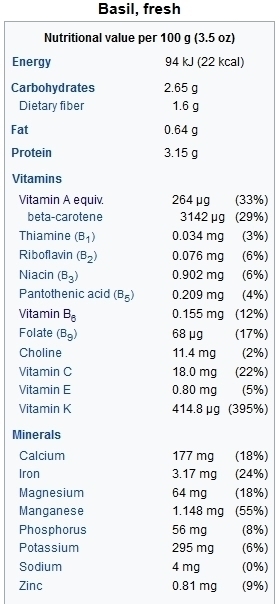 es are great in salads.
es are great in salads.
It takes two read-overs of basil on the nutritional chart here to see what a super-food it is and how it would be good to consume a certain volume of the plant regularly.
I consume around five to fifteen grams of the wild strain a day. I will cycle off basil a few months of the year, usually because I am away from the farm, but it is pretty regular for me.
It’s higher in protein than it is in carbs, for you bodybuilders and strength enthusiasts out there that want nothing but a lean machine.
Experiment with Mederanian ketogenic periods. 😀
It’s high in minerals, like magnesium, calcium, iron, and zinc, it is blood, hormone, and bone food.
It is also very high in manganese a feature that to me, helps me to describe 5 to ten-gram a day intake limits, although I seriously do not consider too much a risk of things like over manganese dosing inside of a proper Nutritional Diversity diet spread.
Choline and Thiamine, are important to a regular amount of also, and are sometimes unavailable in many of today’s primary consumption foods, while important nutrients to many athletes, who would otherwise get these from vitamin supplements.
To come up with the best diet plans, especially at the high diversity level it can get kind of a puzzle piece but it doesn’t take too long to get the hang of it. A class can always help.
Basil Medicine
The unique spread of active constituents and flavonoids found in basil provide protection at the cellular level.
Orientin and vicenin are two water-soluble flavonoids that have been of particular interest in basil, and in studies on human white blood cells indicate the components of basil protect cell structures as well as chromosomes from radiation and oxygen-based damage.
Basil has also been shown to provide protection against unwanted bacterial growth. Basil’s anti-bacterial properties are not associated with its unique flavonoids, but instead with its volatile oils, which contain estragole, linalool, cineole, eugenol, sabinene, myrcene, and limonene.
Lab studies show effective restricting growth of numerous bacteria, in basil including Listeria monocytogenes, Staphylococcus aureus, Escherichia coli O:157:H7, Yersinia enterocolitica, and Pseudomonas aeruginosa.
BASIL RANKINGS
Bringing a well-rounded bunch of superfoods into the home is what we do with our product rankings.
Basil is a special herb that is easy to grow, and having the best is important.
1. 10000 NON-GMO Seeds for 2$ Shipped Free
This product won our top ranking, our hearts, and our souls!
There is no better time and no easier herb to do in an indoor pot where you live.
Over 150 happy reviews!
We must encourage growth!
2. Organic India
195 happy customer reviews.
Holy Basil helps provide a healthy stress response when dealing with anxiety and is considered rejuvenating.
Tulsi is famous for helping support the immune system, stamina, and endurance.
4. Seeds of Change
Get back to the roots with organic Genovese basil seeds.
Plant them in a self-watering planter for efficiency or in an indoor garden.
Perfect for salads, seasoning & pesto.
Seeds of Change was built on the premise of preserving biodiversity, sustainability, & organic seeds with the promise of making organic foods available to gardeners & farmers since 1989.
5. Best Naturals
Those who want a more precise and calculated intake may prefer the extract tablet.
This product helps the body adapt to stress, supports carbohydrate metabolism and healthy blood glucose levels as well as a healthy adrenal gland.
Over 150 customers are happy with this Amazon’s Choice product.
6. Herbal Secrets
100 Happy customers for the well priced Amazon’s Choice product.
7. Bulk Buy for the Commune
Take care of everybody.
8. Whole Foods Fresh Delivery
Whole foods fresh and free delivery is a new feature but could be a great way to get the good stuff.
We want to hear more about customers using this.
There is a smaller leaf Tai variety.
9. YAVEES Leaves
New on the market these dried leaves look to please.
Basil is a pantry essential and this versatile seasoning can be used in various ways.
It comes in a 2-pack of 5oz bags.
10. Artizen Oil
Over 22,000 happy customer reviews for this incredibly well-priced oil. This is a no-brainer buy right here.
What sets Artizen Essential Oils apart are their unparalleled purity and concentration. Natural, with no adulterants or dilution, their oils provide the maximum benefit possible and are uncompromising.
Most of the Competition Dilute Their Oil with a Cheap Carrier Oil (it’s usually only 1/3 of the Natural Oil and 2/3 Carrier Oil) or Even Other Potentially Dangerous Chemicals.
Our Basil Oil is Routinely Tested for Purity And Other Unique Qualities in Order to Ensure You Are Buying The Purest Oil Available!!
We use high-quality bottles infused with a UV-colored coating to protect essential oils against sunlight and degradation.
The manufacturer, Artizen Essential Oils, offers a lifetime warranty and guarantee on their product. If you are ever unsatisfied with their oil for any reason they will replace your product or refund your money. They stand behind and guarantee the purity of their oils 100%.
Travel Size. Concentrated Basil
For those of you working on that collection of little bottles. 3000 satisfied consumer reviews.
BONUS. Mrs. Meyers
We try to keep with the entire spirit of the herb’s use in our recommendations.
With over 375 happy customers and a low low price who can complain?!
BASIL BENEFITS
Glucose lowering and antioxidant effects of O. basilicum was evident biochemically in this study. O. basilicum could protect the kidney against diabetes-induced nephropathy as revealed biochemically and histopathologically. [1]
Need that extra push fo some better sleep? Evidence suggests the best basil can play a role in enhancing dream states. The present data demonstrated that Ocimum basilicum potentiates sleeping behaviors without any cytotoxicity. [2,3]
Antimicrobial and antibacterial power of basil oil is there, and if more is needed combinations with Lippia multiflora Moldenke, Mentha x Piperita L. (peppermint) The effectiveness of such oils was tested against Escherichia coli CIP 105182, Enterobacter aerogenes CIP 104725, Enterococcus faecalis CIP 103907, Listeria monocytogenes CRBIP 13.134, Pseudomonas aeruginosa CRBIP19.249, Salmonella enterica CIP 105150, Salmonella typhimurium ATCC13311, Shigella dysenteriae CIP 54.51 and Staphylococcus aureus ATCC 9144 [4]
Basil could light the way on the road to breast cancer treatment and elimination. The results of the detection of bioactive compounds signified that eugenol epoxide, lutein epoxide, and lupeol epoxide constituted the most active fractions in the crude methanol extract of C. campestris, a parasite associated of basil and displayed the cytotoxic effects on breast cancer cells. [5]
The anti-obesity study explored phytochemicals, porcine pancreatic α-amylase (PPA), and lipase (PPL) inhibitory activities and antioxidant potential of polar and nonpolar extracts of the leaves and flowers of Ocimum basilicum and the in-silico model of interaction between these enzymes and the major chemical constituents of the herb. [6]
The best basil shows a heavy application for antifungal activity. [7]
Certain animal tests indicate the best basil could be employed to help improve memory in high doses. [8]
The global meat industry is characterized by a growing interest in natural preservative additives. This study determined the effect of sweet basil (Ocimum basilicum L.) essential oil (SBEO) on color and lipid oxidation in minced beef as an alternative to other preservatives: A total of 32 bioactive compounds were identified in SBEO, with reported preservative functions including antioxidant and antimicrobial activities, as well as anti-inflammatory, nematicidal, and anticancer compounds. The addition of 2% and 4% SBEO improved the color stability of minced beef during 7 days of refrigerated storage compared to the control. The TBARS were significantly lower in SB2 and SB4 on days 0 and 4, while SB6 was similar to or higher than C. The results indicate the potential of SBEO at 2 and 4% as a natural antioxidant additive to improve color and lipid oxidative stability during refrigerated storage of aerobically packaged minced beef, and further studies investigating its antimicrobial activity are recommended.
This testing is especially important in the face of the idea that longer shelf life for foods means a shorter life span for consumers. [9, AR6]
Essential oil antifungal armada including cinnamon should do any antifungal need several times over.
The results from this study revealed that some EOs could be used as an alternative agent for the treatment of infections caused by Candida spp. Pelargonium graveolens, but also Cinnamomum cassia essential oils exhibited synergistic activity with amphotericin B, which allows us to conclude that these EOs can be used as a supplement for traditional chemotherapy.
Most of the oils were effective in inhibiting of mycelia morphological transformation. Our research revealed also that cell membrane seems to be the most important target of ingredients of investigated oils. [10, 11, AR7, AR8]
The present study examined the efficacy of Ocimum basilicum (basil) extract, a natural herb, with antioxidant properties, against testicular toxicity induced by cadmium (Cd), which is one of the most important toxic heavy metals which lead to infertility. [12]
Indicative of a mosquito repellent ingredient both as an agent in diet and topically. [13]
One fascinating discovery demonstrated that O. basilicum essential oil has an important anti-hyperalgesic profile, suggesting that this oil, isolated or complexed with β-CD, can be an interesting alternative for the development of new therapeutic options for the treatment of chronic painful conditions, as fibromyalgia. [14]
The leaves of O. basilicum are a rich source of flavonoids that possess various biological properties related to antioxidant mechanisms. Caffeic acid is another component in the leaf of the O. basilicum that has antioxidant, anti-inflammatory, and cancer chemopreventive activities [15]
BASIL SIDE EFFECTS
The herb is safe in moderate doses. We say 15 grams would be a good limit for adults, especially if they are new to her.
However, there has been testing to suggest high doses help with memory loss and other serious conditions.
As with any substance go slow to assess tolerance.
BASIL EXPERIENCE
Can basil treat depression? In combination with other moods-affecting herbs can we put together quickly, a help through hard times? Of course, we can.
Basil is considered an aphrodisiac, in Eastern and Indian cultures, where the plant may have originated from.
A ritual that involved topping the chest of the woman in a marriage is said to have made husbands more loyal and in love with their wives – a cure to infidelity of sorts.
Certain cultures know about the power of basil ingested as a whole food over time, building up to be a very supreme and loving energy source in males.
Its delicate and sensual perfume has made the basil a stimulant of sensuality.
In Haiti, it is reputed for its association with Erzulie, the goddess of love.
Tomatoes spiced with chopped fresh basil leaves are called “love apples”, when if used in olive oil and in combination with parsley, pine buds, and cheese you have made the lover’s pesto sauce.
Jewish folklore suggests it adds strength while fasting. [AR1]
The Greek Orthodox Church regards the royal spice a “Holy Herb” which it is used to sprinkle holy water. This practice is carried through the Bulgarian Orthodox Church, Serbian Orthodox Church, Macedonian Orthodox Church, and Romanian Orthodox Church (Bulgarian and Macedonian: босилек; Romanian: busuioc, Serbian: босиљак) where also pots of basil are regularly placed below church altars. [AR10]
In Europe basil is put in the hands of the dead to ensure safe passage.
In India, they place it in the mouth of the dying to ensure they reach God.
The ancient Egyptians, like the ancient Greeks, believed it would open the gates of heaven for a person passing on. [AR11]
BASIL DISCUSSION
Wash leaves and foods with basil oil.
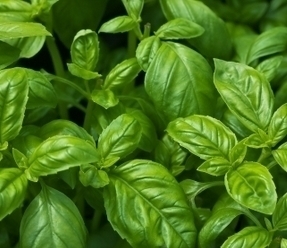 The February 2004 issue of Food Microbiology, says that washing produce in a solution containing either basil or thyme essential oil at a very low concentration of just 1% resulted in dropping the number of Shigella, an infectious bacteria that triggers diarrhea and may cause significant intestinal damage, below the point at which it could be detected.
The February 2004 issue of Food Microbiology, says that washing produce in a solution containing either basil or thyme essential oil at a very low concentration of just 1% resulted in dropping the number of Shigella, an infectious bacteria that triggers diarrhea and may cause significant intestinal damage, below the point at which it could be detected.
While scientists use this research to try to develop natural food preservatives, it makes good sense to include basil and thyme in more of your recipes, particularly for foods that are not cooked such as salads or blender delights.
Adding fresh thyme and/or basil to your next vinaigrette will not only enhance the flavor of your fresh greens but will help ensure that the fresh produce you consume is safer to eat.
Basil Look-alike: Zornia / Trecilla
Blechum pyramidatum : ACANTHACEAE
(this is the stuff I use – and is a wild strain more or less of basil)
A common look-alike to basil, invasive to homes and domestic areas, at most elevations, in Central America is Zorina.
The good thing about this look-alike is it is a wonderous plant also. While nutritional fact chart information on Zornia is not available so easily on the net, the plant is well covered and known and can be found, for example in the great picture book entitled Medicinal Plants of Costa Rica (Ed Burnhardt).
According to this book, tea from the leaves is known traditionally to expel small amebas and microparasites. Further research proves this and also finds it a safe remedy for use with small children.
The Nutritional Diversity team of nature’s students here in Panama, have thoroughly used Zornia in blends and burritos for one year now. It continues to be a regular part of our diet because it grows in strong abundance here.
Basil Permaculture
I have wild basil that grows naturally across the family farm, here in Panama and have witnessed its existence as a small but strong, multiplying, and determined plant, that possesses a dexterous growing method and whose potency is as depression medication and an overall system super-food.
Nutritional Diversity & Permaculture Costa Rica study sites have several different varieties and cousins.
This plant is a long-time native of this island. I have brought a few more strong cousins into the situation.
I am thankful to have experienced several different basil’s and I think I have an idea of why it was King’s food – it is!
The first step in learning to talk to plants is cultivating politeness, realizing that the pine trees have been here for 700 million years must have been doing something before we came on the scene a mere million years ago.…besides pining away for our existence–STEPHAN BUHNER, The Secret Teachings of the Plants
BASIL FAQ
Q. Where is basil originating from?
A. Basil is native to tropical regions from central Africa to Southeast Asia.
Q. What form of basil plant is it?
A. Basil is an annual, or occasionally perennial, herb. According to the variety, plants can attain a height of between 30 cm (0.98 ft) and 150 cm (4.9 ft).
Q. What well-known principle uses does basil have?
A. Basil has two main uses, namely culinary and medicinal.
Q. What character does basil exhibit?
A. The leaves may taste vaguely like anise, with a strong, pungent, often sweet smell.
Q. How does basil look?
A. The leaves of basil are green and ovate and come in a wide variety of sizes and shapes. Leaf sizes range from 3 cm (1.2 in) to 11 cm (4.3 in) long, and between 1 cm (0.39 in) and 6 cm (2.4 in) wide. Basil develops a thick, central taproot. Its flowers are small and white and emerge from a central inflorescence that protrudes from the central stem at the top of the plant.
Q. When do we harvest basil?
A. One can harvest basil when the plant reaches 2 months old after planting.
Q. What member is basil belonged to?
A. Basil belongs to the mint family and there are many varieties.
Q. What nutrients does a basil plant constitute?
A. This basil plant contains carbs, protein, vitamins A, vitamin K, calcium, manganese, and iron.
Q. Does basil really help in lowering blood sugar levels?
A. Research has shown that basil helps regulate blood sugar levels, cholesterol, and triglycerides in preliminary studies.
Q. What role do basils play in traditional herbal medicine?
A. Basil is treasured and used in both traditional Ayurveda and Chinese medicine.
Q. Are basils susceptible to pest issues?
A. Basil can be attacked by several pathogens, most of which are fungal-based in nature.
Q. Does basil have pro-oral health property?
A. Basil can potentially inhibit the growth of bacteria that cause dental decay
Q. Is basil a natural insect repellant?
A. Basil acts as an agent that repels insects, such as mosquitos and ticks.
Q. Is basil good for general blood circulation in our bodies?
A. Basil serves to relax blood vessels and thin our blood, akin to the action of aspirin.
Q. What are some anti-stress uses for basil?
A. Basil can help reduce depression associated with chronic stress.
Q. Does basil improve brain function?
A. Basil can help lower memory loss related to stress and aging.
Q. How about the culinary aspect of basil?
A. Basil complements other herbs and spices. Both fresh and dried basil works well for garnishing our dishes.
Q. Is there evidence that basil consists of anti-cancer properties?
A. There is preliminary evidence that shows that basil indeed prevents certain cancers, such as cancer of the breast, colon, and pancreas.
Q. Does basil have any antibacterial properties?
A. Yes. Basil acts as an alternative to antibiotics for infectious diseases, in particular, fighting against antibiotic-resistant strains of bacteria.
Q. What are the favorable growing conditions for basil plants?
A. One can grow basil with nighttime temperatures above 60℉ (15.5℃) for two months. Basil is mortally sensitive to cold and generally prefers sun exposure all day.
BASIL RECAP
It could improve memory, fat regulation, blood sugar balance, mood, sleep, and fungal infection.
Easy to grow in pots, in the garden, and indoor settings.
Great for salads and spice. Also for preserving meats.
Essential oils in combination (cinnamon) could replace chemotherapy treatments.
The royal spice could protect male fertility and healthy testicular function.
Eat basil to keep the mosquitos off of ya.
Will guide your soul to the spirit land.
RELATED MATERIAL
Additional references,
-
- Tova Navarra (1 January 2004). The Encyclopedia of Vitamins, Minerals, and Supplements. Infobase Publishing. pp. 25–. ISBN 978-1-4381-2103-1.
- Rates SMK (2001) Plants as a source of drugs. Toxicon, 39, 603–613
- Matsuda M., Shimomura I. Increased oxidative stress in obesity: Implications for metabolic syndrome, diabetes, hypertension, dyslipidemia, atherosclerosis, and cancer. Obes. Res. Clin. Pract. 2013;7:e330–e341. doi: 10.1016/j.orcp.2013.05.004
- Jiménez-Medina E, Garcia-Lora A, Paco L, Algarra I, Collado A, et al. (2006) A new extract of the plant calendula officinalis produces a dual in vitro effect: cytotoxic anti-tumor activity and lymphocyte activation. BMC. Cancer 6:1–14
- Kobayashi S, Iwase H, Ito Y, Yamashita H, Iwata H, et al. (1997) Clinical significance of bcl2 gene expression in human breast cancer tissues. Breast Cancer Res Treat 42:173–181
- Metsovas S. Synthetic Antioxidants: Longer Shelf-Life May Lead to Shorter Lifespan. 2013
- Chi H.-W., Yang Y.-S., Shang S.-T., Chen K.-H., Yeh K.-M., Chang F.-Y., Lin J.-C. Candida albicans versus non-albicans bloodstream infections: The comparison of risk factors and outcome. J. Microbiol. Immunol. Infect. 2011;44:369–375. doi: 10.1016/j.jmii.2010.08.010
- Chow J.K., Golan Y., Ruthazer R., Karchmer A.W., Carmeli Y., Lichtenberg D., Chawla V., Young J., Hadley S. Factors associated with candidemia caused by non-albicans Candida species versus Candida albicans in the intensive care unit. Clin. Infect. Dis. 2008;46:1206–1213. doi: 10.1086/529435
- Abdollahi A, Hassani A, Ghosta Y, Bernousi I, Meshkatalsadat MH, Shabani R, et al. Evaluation of essential oils for maintaining postharvest quality of Thompson seedless table grape. Nat. Prod. Res. 2012;26:77–83
- Mercia MacDermott (1998). Bulgarian Folk Customs. Jessica Kingsley Publishers. pp. 114–. ISBN 978-1-85302-485-6.
- Robin Nelson-Shellenbarger (25 February 2013). Family Herbal Wellness. Booktango. pp. 38–. ISBN 978-1-4689-2481-7.
- Lucy Bregman (2010). Religion, Death, and Dying. ABC-CLIO. pp. 136–. ISBN 978-0-313-35180-8
Originally Published Jan 4, 2017, at 22:58 Updated March 21 2o2o, Jul 24, 2020
Agriculture
NUTRITIONAL DIVERSITY SUPPLEMENTS
ND Supplements
Best Ashwagandha Rankings, Benefits & Experience
The best ashwagandha is one of the most famous and central of Ayurvedic herbs, and for good reason. The odor of horse (‘ashwagandha‘ translated). Withania somnifera, known commonly as ashwagandha, Indian ginseng, poison gooseberry, winter cherry, or urine of the cows, is a plant in the Solanaceae / nightshade family.
Ayurveda, roughly translated into “Knowledge of life”, if which the magic herb is center in therapeutic measures to boost physical, mental, social, and spiritual harmony in order to improve the total quality of life. [x]
Several other species in the genus Withania are morphologically similar, which means at a microscopic, or not level, the anatomy or structure of the plant closely resembles that of other plants, in this case in the nightshade family.
The tomato is of the nightshade family. Cucumbers and peppers, too. ND normally goes very light on nightshades; peeling and de-seeding are very important with them because of the ‘lectins’ they carry. These lectins are proteins that act as splinters to sugar molecules that together create toxins that dull performance and cause signs of aging. The *could be bypassed by leaf-only consumption.
There are many a processes involved with eating from the garden, and they should be. It is like a video game after a while, trying to find the hidden way and unlock the power of nature and her armada of trillions upon trillions of species that work together as a divine organ playing the tune of life. We will never understand it all in this lifetime.
Ayurveda is the oldest surviving written system of healing and optimization. Popular herbs in today’s culture, such as the popular  root of turmeric or cousin ginger, are two other plants of the same family with similar morphological benefits.
root of turmeric or cousin ginger, are two other plants of the same family with similar morphological benefits.
The ND Sciences Group has been using each of them for temporary use treatment, not for regular use treatment.
The use of the best ashwagandha in Ayurvedic medicine extends back over 3000 to 4000 years to the teachings of an esteemed rishi (sage), Punarvasu Atriya.
It has been described in the ancient principle sacred texts of Ayurveda, including the Charaka and Sushruta Samhitas.
Ashwagandha is also used as an “adaptogen” to help the body cope with daily stress, lower blood pressure and as a general tonic to improve immunity.
Many don’t realize that when certain plants are used together they can unlock a new level of effectiveness.
Oftentimes these ‘together’ effects can be unlocked through the use of other plants such as the best hot peppers, other peppers, and black pepper.
Withania somnifera has been a principal ingredient in many herbal remedies and green juices, throughout time.
Let’s check out the best ashwagandha we can order up today and get it into our system tomorrow!
ASHWAGANDHA RANKINGS
BEST ASHWAGANDAH BY NUTRITIONAL DIVERSITY
ASHWAGANDHA BENEFITS
Treats Alzheimer’s and other neurological conditions, effects of HIV. [1,a]
A maximum stress relief agent, [2,a] and even a sleep-inducing aid. [3]
Striking antioxidant properties are contained in the miracle herb. [4]
Like the best gotu kola, the herb acts in many ways as a brain cell protector, displaying anti-cancer actions and compounds have neuroprotective effects against glutamate insult, a potential that may serve as a great supplement for brain health. [5,a,b] Also as a strong general anti-anxiety and oxidative stress reducer [c]
Anti-cancer activity is a main study of the best ashwagandha herb, and has been known as a cancer medication for a long time. [6,a,b,c] Key essence known as Withanone.
Hello ladies, the abracadabra vowel arranged herb enhances sexual function, atop all these other things. [7] The shrub has enhancing effects on the reproductive system overall. [8]
Also like gotu kola, the best damiana and many medicinal shrubs of her type, ashwagandha can be helpful to insomnia and nonrestorative sleep (NRS) issues. [9]
The Ayurveda staple even helps regulate correct body weight. [10]
Important brain activity changes have been noticed and evaluated in a really interesting study whereas mice were dosed with Scopolamine, an alkaloid from the Datura flower I have a little experience with that of many things that cause amnesia. Withania somnifera, the hopefully memory restoration ingredient. [11]
The blessing is anti-aging, and anti-free radical. [12] She is packed with serious vitality enhancing substances and steroidal compounds have been extracted from her seeds. [13]
Cognitive functional improvements and reaction time improvements have been well known for the power herb. [14,15]
The superfood has been the focus of regenerative health possibilities is an ongoing track of study. [16]
Glutamate neurotoxicity a cause of some stroke, head trauma, multiple sclerosis, and neurodegenerative disorders has pointed a search for herbal remedies. [17]
In the traditional system of medicine in India, the magic herb has been used to treat rheumatoid arthritis. This could surely be helped further by the addition of turmeric. [18]
The magic plant is traditionally used in treating epilepsy, depression, arthritis, diabetes, and palliative effects such as analgesic, rejuvenating, regenerating, and growth-promoting effects. [19]
examine the possible effects of ashwagandha root extract consumption on muscle mass and strength in healthy young men engaged in resistance training.
A great 8-week, randomized and prospective, double-blind, placebo-controlled clinical study using 57 young male subjects 18–50 years of age, with basic experience in resistance training who were then randomized into magicherbtreatment (29) and placebo (28) testing groups.
Testers in the ‘treatment’ group consumed 300mg of withania root extract twice daily, while the control group ate starch placebos.
This study reported that ashwagandha supplementation is concretely associated with and supportive of significant increases in muscle mass and strength and concluded suggesting that ashwagandha supplementation may be a powerful add-in fop a resistance training program. [20]
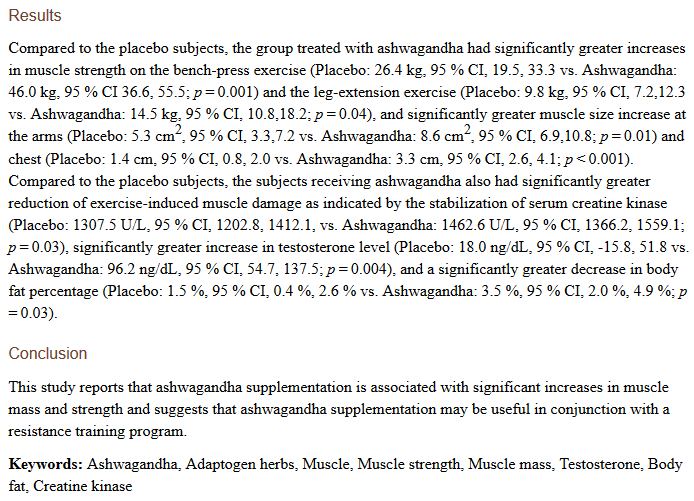
Overall vitality study finds in this 16-week, randomized, double-blind, placebo-controlled, crossover effects on fatigue, vigor, and steroid hormones middle-aged men, that 8 weeks of supplementation with an ashwagandha extract {Shoden beads, 600 mg daily delivering 21-mg withanolide glycoside} was indeed associated with significant improvements in salivary DHEA-S and testosterone production. [21]
An in-depth study on withania suggested her as a valuable natural drug for the treatment of cancers specifically carrying a p53Y220C mutation, which are the large majority of them. Using molecular docking tools and bioinformatics, they were able to test the herb against tumor suppressor p53 protein who is frequently mutated in a large majority of cancers. [22]
General wellbeing, sleep, and mental alertness during the day for elderly individuals is improved through the best ashwagandha supplementation of 600mg of extract per day. [23]
The herbs popularity also comes from the treatment of epilepsy, depression, arthritis, diabetes, and palliative effects such as analgesic, rejuvenating, regenerating, and growth-promoting effects. [24]
ASHWAGANDHA SIDE EFFECTS
Headache, sleepiness, and stomach upset have been reported in clinical studies when doses become very high. Remember to start slow with all things, rare allergic reactions are always possible.
Withania somnifera is regarded generally as very safe. [x,x]
ASHWAGANDHA EXPERIENCE
I use the shrub as much as possible, it grows at certain locations I visit it frequently. I am new to knowing her personally.
Ashwagandha ‘s History & Modern Use
Traditionally, ashwagandha has been given as a nerve tonic and adaptogen, which means as an agent to helps people adapt to various emotional and physical stressors.
It was classically used in India for nearly 5,000 years for conditions such weakness and debility in old age, hardships while young, constipation, insomnia, nervous conditions, stress, goiter, joint inflammation, parasites, hormone balance, and rheumatism – sort of a cure-all bring the overall system up herb. Good Nutritional Diversity diet plans want as many species with that feature as they can get in.
In old days a paste even made from the ashwagandha root, powdered then applied topically as a treatment to boils, cancers on the skin or gums, and other health threatening-looking tissue.
Ashwagandha is known to help people strengthen their immune systems after illness, chemotherapy, and surgery. It is a highly effective, evidence-based remedy to help reduce levels of stress and anxiety by lowering cortisol levels, and a plethora of other ways, to reach the end goal.
The scientist is quick to point out the presence of triterpene lactones, withanolides, withaferin A, alkaloids, steroidal lactones, tropine, and cuscohygrine, and other relatively powerful and recognized plant essences and chemicals realized form the laboratory dissection of the plant – something that in the pursuit of healing and performance anyway, is not necessary.
Alternative Use of Ashwagandha
Now people have matched the magic herb to a stack of conditions such as arthritis, anxiety, bipolar disorder, attention deficit hyperactivity disorder (ADHD), balance, obsessive-compulsive disorder (OCD), trouble sleeping (insomnia), tumors, tuberculosis, asthma, a skin condition marked by white patchiness (leukoderma), bronchitis, backache, fibromyalgia, menstrual problems, hiccups, tumors, tuberculosis, asthma, a skin condition marked by white patchiness (leukoderma), Parkinson’s disease, and chronic liver disease. It is also used to reduce the side effects of medications used to treat cancer and schizophrenia.
Like ginger, ashwagandha is said to reduce fat and sugar levels in the blood. A very similar list seems addressed by another shrub the same size; Ambrosia.
The soft two and a half foot shrub sometimes with small berry, is easy to grow in pots, and around the permaculture farm in sunny to partial, in dry stony earth. It has fury leaves and green parts and grows the orange to red fruit inside of a case that looks like the roof of the Kremlin, made from linen.
ASHWAGANDHA DISCUSSION
We ranked the best ashwagandha Withania somnifera, supplements to asses real source quality, refer the potent medicinal herb to clients as an alternative to other substances and to further our studies of plants and plant nutritional effects across I wider range of experiment and examination.
We looked hard at the warm looking herb whose fruits come in Kremlin-like domes that really help aerate and nutrify soil mixes, and we took time to consider what factors were important, and what factors were not while selecting the best Withania somnifera, herb source.
This is done by our company because we think one day the referrals could help us to provide this cutting edge information and because we need to find out and refer only the best product to our group of readers.
The Withania somnifera, is very applicable to the ND food combinations and ratios we have been working on in the last few years. She fits right in. We mark her high, on the demand list for our clients, permaculturists, athletes and general followers.
This is one of the ones we have spent a lot of time on.
Third-party testing of the substances available was required for ranking in this particular recommendation.
At least one hundred positive user statements are materials were the second requirement we had in this eval.
Anytime there is a good combination herb or benefits for any given substance we are sure to make mention of that. In this case turmeric for arthritis maybe jackfruit too, and damiana and or mango for energy and sexual performance and function restoration, gotu kola or dormilona (which acts more as a stimulant for me personally) for sleep and insomnia, and papaya for high-octane digestive capabilities and ginger for blood management. Black pepper, hot pepper, salt, oils and avocado can always improve uptake.
ASHWAGANDHA FAQ
Q: What is the best ashwagandha combination ND research is aware of?
A: The best damiana. The combination can be too much for some. Go slow. Haste makes waste.
Q. Can ashwagandha help me lose weight?
A. It can. If your body reacts to stress by gaining weight either through metabolic changes or through changes in appetite, the best ashwagandha can help immensely by helping to decrease stress.
Q: Does ashwagandha conflict with other herbs?
A: Surely to some degree of conflict there are a few out there, but in contrast thinking towards diversity and that natural lesson, the combinations we have found are the real focal point for this diva.
Q: Why the singing references?
A: Everybody is singing something no? I prefer honest songs. That is guaranteed in the plant world, and “if you grow them then you can know them.” They are always up for that, and they are always honest what more can you want?
Q: Is ashwagandha a topical herb?
A: One way to find out. Try it. To really get anywhere with nutrition one must remain forever experimental. Safe and logical but not totally in fear – this will get you nowhere. Fear is the Black Hole. Remember that. We will get back to you on this.
Q. What plant family is ashwagandha a member of?
A. Ashwagandha is a plant in the Solanaceae or nightshade family.
Q. What form of ashwagandha plant is it?
A. This ashwagandha plant is a short, tender perennial shrub attaining a height of 35–75 cm (14–30 in).
Q. What well known medicinal properties do ashwagandha possess?
A. The plant, particularly its root powder, has been used for centuries in traditional Indian medicine.
Q. How does ashwagandha look?
A. The ashwagandha plant has hairy branches extending radially from a central stem. Leaves are dull green, elliptic, size of which is up to 10–12 cm (4 to 5 in) long. The bell-shaped flowers are small and greenish. The fruit is orange-red.
Q. When does the ashwagandha plant mature and ready to be harvested?
A. Ashwagandha is ready to harvest in 5 to 6 months when flowers and berries start to form and leaves begin to desiccate.
Q. What kind of substance do ashwagandha also contain?
A. Ashwagandha contains withanolides, withaferin A, alkaloids, steroidal lactones, tropine, and cuscohygrine. Notably, withanolides are structurally similar to the ginsenosides of the ginseng family.
Q. What conditions are favorable for ashwagandha plants?
A. Ashwagandha is a drought-tolerant plant and grows in dry soil, once put down. Ashwagandha grows best when the temperature ranges between 70 F – 95 F (20 – 35 C).
Q. How does ashwagandha fame come about?
A. Ashwagandha is an important herb in Ayurveda, which is a form of alternative medicine based on Indian principles of natural healing.
Q. Does ashwagandha support heart health?
A. Ashwagandha has been shown to induce cholesterol- and triglyceride-lowering actions. This in turn will work for your heart, reducing cholesterol and lowering blood pressure altogether.
Q. What can ashwagandha do about the inflammation?
A. Various studies have been conducted and evidence has been pointing to that ashwagandha helps decrease inflammation by increasing the activity of natural killer cells.
Q. What other good benefits does ashwagandha give to bodies?
A. In studies, it has been shown that ashwagandha had boosted greater gains in muscle strength and size, while reducing in body fat percentage when compared with the placebo group.
Q. Does ashwagandha impact positively on male fertility?
A. It has been reported that ashwagandha increases testosterone levels and largely enhances sperm quality and fertility in men.
Q. Does ashwagandha possess calming effects?
A. Ashwagandha has been demonstrated to fight stress and anxiety in animal and human studies.
Q. Are there precautions for ashwagandha use?
A. Ashwagandha is a generally safe supplement for most people. Since its long-term effects are unknown, pregnant and breastfeeding women are advised to steer clear of its use. Autoimmune-deficient individuals, such as those who suffer from conditions like rheumatoid arthritis, lupus, Hashimoto’s thyroiditis, and type 1 diabetes should also consult with doctors before using it. It also has the effect of decreasing blood sugar and blood pressure levels, so medication dosages may need to be regulated if one takes it.
Q. What is the dosage suggested for taking ashwagandha supplement?
A. The common root extract is usually taken in 450–500-mg capsules once or twice daily.
ASHWAGANDHA RECAP
The best Ashwagandha is brain food and brain protectant.
She another anti-cancer wonder plant, and helps with overall female reproductive systems.
The magic herb may help arthritis. Use with turmeric.
She takes care of some stress too and can sing a song for insomniacs. Stabilize mood and anxiety.
This adaptogen helps people immensely with harsh, extreme, and difficult changes.
Throw some leaves from the magic herb and berry wonder in your water pitcher.
Great all-natural science-backed boost for muscle strength and recovery, as well as mass building.
Just give me the best ranked.
ASHWAGANDHA RELATED MATERIAL
Additional References,
- Deocaris CC, Widodo N, Wadhwa R, Kaul SC. Merger of Ayurveda and tissue culture-based functional genomics: inspirations from systems biology. J Transl Med. 2008;6:14
- Wermuth CG. Multitargeted drugs: the end of the “one-target-one-disease” philosophy? Drug Discov Today. 2004;9:826–827. doi: 10.1016/S1359-6446(04)03213-1.
- Patwardhan B, Warude D, Pushpangadan P, Bhatt N. Ayurveda and traditional Chinese medicine: a comparative overview. Evid Based Complement Alternat Med. 2005;2:465–473. doi: 10.1093/ecam/neh140
Originally Published Oct 19, 2019, Updated April 4 2013, Apr 4, 2020
Special Elements
Best Hot Peppers, The Many Benefits, Rankings, Side Effects & Experience
𝕻icante, or spicy hot peppers are not as popular here in South America, as they are in my hometown of Albuquerque, New Mexico,

Albuquerque Hot Air Balloon Fiesta, State Flag Balloon
which is also the hometown of the #1 International Fiery Foods Festival and also the more famous International Hot Air Balloon Fiesta.
Hot peppers have been used, cultivated, and cherished since man existed. Mostly for a good purpose, sometimes for bad.
Right away with athletic performance clients, I make sure a fiery food practice is employed. If you want a strong system overall, and you are asking me, you want to start training or progress as significantly as possible in your ability to eat the best hot peppers.
Once you have the skill it’s one you won’t want to lose. They say once you can’t take it anymore it’s hopeless you are without the spice and that’s not good.
The best hot peppers are superfoods. If you are one of the ones that thought you couldn’t but want to get back into it just go slow and keep tomatoes and tomato-based sauces out of it in the beginning. The best olive oil helps.
The love of hot peppers, and the health benefits that have been realized and enjoyed strongly dispel the notions that, if it tastes good it is best for you, or that taste is an object of edibility.
Hot peppers, especially those containing capsaicin, can offer a wide range of performance, health, and toughness benefits when included in a diet. Here’s a breakdown:
Performance Benefits
- Improved Circulation: Capsaicin dilates blood vessels, enhancing circulation and oxygen delivery to muscles during physical activity.
Metabolic Boost: Eating hot peppers can increase metabolic rate, helping with fat burning and energy production.
Endurance Support: The adrenaline rush from spicy foods can enhance focus and stamina, potentially improving athletic endurance.
Pain Tolerance: Regular exposure to capsaicin may increase your pain threshold, which can be helpful in pushing through tough workouts.
Health Benefits
Anti-Inflammatory Properties: Capsaicin has anti-inflammatory effects, helping reduce chronic inflammation, which is linked to conditions like arthritis and heart disease.
Enhanced Immunity: The high vitamin C content in peppers supports the immune system, aiding in quicker recovery from illnesses or strenuous activity.
Heart Health: Capsaicin can lower LDL cholesterol levels, reduce blood pressure, and improve overall heart health.
Digestive Health: In moderate amounts, peppers stimulate the digestive system, improving gut motility and possibly enhancing microbiome diversity.
Pain Relief: Capsaicin can desensitize nerve endings, which is why it’s often used in topical pain relief creams. Internally, this can help alleviate mild discomfort and reduce chronic pain perception.
Anti-Cancer Potential: Studies suggest that capsaicin can help slow the growth of certain cancer cells by promoting apoptosis (programmed cell death).
Toughness Benefits
Mental Toughness: Eating hot peppers regularly can train your brain to handle discomfort better, increasing resilience in challenging situations.
Endorphin Release: The initial heat from peppers stimulates the release of endorphins, the body’s natural painkillers, creating a sense of euphoria and promoting mental toughness.
Adaptation to Stress: Capsaicin activates the same stress responses as physical exercise, helping the body adapt to and recover from stress more efficiently.
Cold Resistance: Regular consumption of spicy foods has been associated with increased thermogenesis, helping you tolerate colder environments more effectively.
Other Benefits
Weight Management: The appetite-suppressing effects of capsaicin can help with calorie control, aiding in fat loss or maintenance of a lean physique.
Antioxidant Protection: Hot peppers are rich in antioxidants like beta-carotene and flavonoids, which protect against oxidative stress and support overall health.
Including hot peppers in your diet in moderation can help you tap into these benefits, making them a potent addition to a health-conscious or high-performance lifestyle.
ABSTRACT
In the garden I have grown some habanero relative peppers, the Mayan relative pepper, a little round ‘tabasco’ pepper, and a few jalapenos in the mountains, which speak for the general idea in local peppers. There are many species of best hot peppers that do well here, and really most hot peppers can do well anywhere they are fed and attended to well.
The most well-known hot variety, although not so hot here anymore, are listed as ‘Mayan’ peppers, and they are larger peppers and look like the ‘Red and Green Chile’ in New Mexico that hangs on ‘ristras.’
New Mexicans have been eating these (our local version of that can be very hot) chili peppers that grow there for thousands of years. New Mexicans I know will tell you our pepper is from there in New Mexico brought directly from God and is the super, superfood of them all, and you will read in a moment how they really are!
The main idea in the migratory plant study is that the Mayan pepper is from the traditional Aji, and from that different cultivars evolved.
Concretely, in contrast, there is really nothing to assure that this idea is true, or that the idea of New Mexico’s Hatch Green Chili is a completely different insert ofa completely different pepper either.
Some have theorized that Hatch Green Chili peppers, the best hot pepper could be behind Albuquerque dominating the UFC.
Ideas of hot foods making hot heads in history are all theoretical. Mostly the thought was spicy food love started during specific cultures that practiced developing intentional pain tolerance.
Recently, phytoliths of garlic mustard seed (Alliaria petiolata) were found in carbonized food deposits on prehistoric pottery from the western Baltic dating from 6,1 k.a to 5,7 k.a cal BP (Ertebölle Complex).
This archaeological evidence suggests much greater antiquity to the spicing of foods than previously thought within a hunter-gatherer or ancient premise.
Garlic mustard a.k.a. Hedge garlic alliaria petiolata is an inconspicuous plant, found in clumps in the lighter forest, which belongs to the Brassicaceae family of plants. It is native to Europe, Western and Central Asia, and Northwestern Africa. The leaves, flowers, and fruit are of the species are all edible.
The fruit of plants from the genus Capsicum, members of the nightshade family, Solanaceae. The name comes from the Aztec language, Nahuati.
Lunch was good!
On our own we know that eating spicy foods activates en expulsion of mucus from the system, namely in the sinuses.
This is important cleaning, and many health theories such as Arnold Ehret, a Godfather to vegetable healing have been logically formed around mucus-lessness as the real code to staying healthy.
No pain no gain can be employed here, and one can do their own experiment with that. Eat a large number of strong peppers, and on the other side of the hurt, one will find that their system is clear.
Electrophysiological records in both peripheral and central nervous systems show that the primate sensory taste system is basically organized around two major clusters of fibers and their cortical projections.
Co-variations between the neural responses to various compounds were observed for sugars, on the one hand, and for tannic acids and alkaloids. Our human taste perception system is not essentially different from that of the other primates as far as the dichotomy allowing discrimination of noxious v.s. beneficial substances through taste; clearly in the case of hot peppers not so much, nor maybe in garlic, black pepper ginger or turmeric.
Interestingly we know that two of these hard-tasting miracles, turmeric, and black pepper, are more active together and this could be similar in hot peppers.
An increasing amount of evidence shows that animals such as insects, birds, and primates use plant parts with certain categorical compounds known as ‘secondary compounds’ to improve their comfort or their health.
The concept of self-medication now generally accepted in primates but also in other vertebrates was first proposed by D.H Janzen (1978), an ecologist at the University of Pennsylvania.
Liken to the spice, bitterness is normally suggested to represent a reliable signal of toxicity for animals and humans but a number of secondary compounds are bitter tasting (Saponins, Alkaloids, and some Sesquiterpenoids, Terpenoids and Steroid Glycosides) and many of these substances possess important pharmacological activity.
Garlic mustard produces a variety of helpful secondary compounds including flavonoids, defense proteins, glycosides,
Nutritionally Diverse, Spicy Lunch
glucosinolates, particularly Sinigrin, a breakdown product allyl- isothiocyanate (AITC) that reduce its palatability to herbivores.
The chili plant seed is broken down by humans and primates whose taste receptors are burned, but the bird’s digestive tract does not break down the seed nor does the bird spit it out, from any taste reaction because it does not have the primal dichotomy of dissemination as an obstruction to his interest in the seed.
The plant should be well propagated by the bird gardener members of a miraculous human-inspired permaculture somewhere.
Popular Science and many others have had a very difficult time deciphering the love of chili eating, but well recognized that many do love it, and to them, it’s a deep passion. Chili is still the word for the plant pepper as it was for the Mayans and the Aztecs who may have been the one who gave it that name.
“Acceptance of food depends not only on taste, but also on olfactory, tactile and visual signals, as well as memories of previous, similar experiences and social expectations. Food palatability and hedonic value therefore play central roles in nutrient intake. As a result, ancestral humans who liked spicy food—and therefore gained from its health benefits—might well have had longer, healthier lives and more offspring” (Nilius & Giovanni 2011)
Paul Sherman, a professor of neurobiology and behavior at Cornell University in Ithaca, New York has research that shows people in warmer regions of the world benefiting from eating spicier foods, because of the fiery peppers are natural antimicrobials.
Food-born pathogens and parasites are more populated in warmer climates, and spices can kill or inhibit their growth.
The spicy research presented in National Geographic (2005) sited that in the same region of Thailand one culture who eats blander foods, ( less spicy) does experience more diarrhea and infections.
Paul went on to find out that hotter cultures ate the hotter foods, and colder ones ate less spicey foods, interestingly the germ stopper is less popular where it is not needed, such as in cold climate places.
Albuquerque, nestled into the foothills of the Rocky Mountains, must be the exception.
Here are the rankings for the best hot peppers, you can order to your door.
HOT PEPPER RANKINGS
Heat Ranking
As of January 2025, here is a list of the top 20 hottest peppers in the world, heat ranked by their Scoville Heat Units (SHU):
Pepper X: 2,693,000 SHU
Developed by Ed Currie, Pepper X holds the Guinness World Record as the world’s hottest chili pepper since 2023.
Wikipedia
Carolina Reaper: 2,200,000 SHU
Created by Ed Currie, the Carolina Reaper was the previous record holder for the world’s hottest pepper.
Wikipedia
Dragon’s Breath: 2,480,000 SHU (unofficial)
Developed in the United Kingdom, Dragon’s Breath has an unofficial SHU of 2,480,000.
Wikipedia
Trinidad Moruga Scorpion: 2,009,231 SHU
Originating from Trinidad and Tobago, this pepper was once recognized as the world’s hottest.
Wikipedia
7 Pot Douglah: 1,853,936 SHU
Also known as Chocolate 7 Pot, this pepper is native to Trinidad and Tobago.
Pepper Johnny
Komodo Dragon: 1,400,000 SHU
Developed in the United Kingdom, the Komodo Dragon chili is known for its delayed heat.
Rockadoodledo
Naga Viper: 1,382,118 SHU
A hybrid chili pepper created in the UK by crossing three of the world’s hottest peppers.
Rockadoodledo
Ghost Pepper (Bhut Jolokia): 1,041,427 SHU
Originating from India, the Ghost Pepper was once the world’s hottest chili.
Rockadoodledo
7 Pot Barrackpore: 1,000,000 SHU
Part of the 7 Pot family, this pepper is known for its extreme heat.
Rockadoodledo
Infinity Chili: 1,176,182 SHU
Developed in the UK, the Infinity Chili briefly held the title of the world’s hottest pepper in 2011.
Rockadoodledo
7 Pot Brain Strain: 1,350,000 SHU
Known for its brain-like appearance, this pepper is a variety of the 7 Pot chili.
Rockadoodledo
Dorset Naga: 1,000,000 SHU
A variant of the Naga Morich pepper, developed in Dorset, England.
Rockadoodledo
Trinidad Scorpion Butch T: 1,463,700 SHU
Once the world’s hottest pepper in 2011, developed in Australia.
Wikipedia
7 Pot Primo: 1,473,480 SHU
Known for its long, skinny tail, this pepper was created by horticulturist Troy Primeaux.
Pepperhead
Chocolate Bhutlah: ~2,000,000 SHU
A cross between the Ghost Pepper and the 7 Pot Douglah, known for its intense heat.
Grow Hot Peppers
Red Savina Habanero: 350,000–577,000 SHU
Once recognized as the hottest chili pepper in the world from 1994 to 2006.
Rockadoodledo
Fatalii: 125,000–325,000 SHU
Originating from Central and Southern Africa, known for its citrusy flavor and intense heat.
Rockadoodledo
Scotch Bonnet: 100,000–350,000 SHU
Native to the Caribbean, commonly used in jerk seasonings and hot sauces.
HomeDiningKitchen
Bird’s Eye Chili (Thai Chili Pepper): 50,000–100,000 SHU
Commonly used in Thai and Southeast Asian cooking, known for its intense heat.
HomeDiningKitchen
Cayenne Pepper: 30,000–50,000 SHU
A staple in many spice racks, often used to add heat to dishes like soups and stews.
HomeDiningKitchen
Please note that the Scoville Heat Units (SHU) can vary based on growing conditions and testing methods.
Nutrient Density Ranking
New Mexico green chiles are a nutrient-rich addition to your diet, offering notable amounts of vitamins and minerals. Here’s how they compare to other hot peppers in terms of nutritional density:
Nutritional Profile of New Mexico Green Chiles
Vitamin C: A ¼ cup (57g) serving provides approximately 36 mg of vitamin C, fulfilling about 40% of the recommended daily value.
Eat This Much
Vitamin A: The same serving offers around 60 µg of vitamin A, accounting for about 7% of the daily value.
Eat This Much
Iron: Contains approximately 0.4 mg per ¼ cup, contributing to about 4% of the daily value.
Eat This Much
Dietary Fiber: Provides about 1 g per serving, which is 4% of the daily value.
Eat This Much
Revised Ranking of Hot Peppers by Nutritional Density
Considering the nutritional content of New Mexico green chiles, here’s an updated ranking:
Red Bell Peppers: Extremely high in vitamin C (169% DV per 100g) and vitamin A.
New Mexico Green Chiles: High in vitamin C (40% DV per 57g) and a good source of vitamin A and iron.
Habanero Pepper: Rich in vitamin C, vitamin A, and potassium.
Jalapeño Pepper: Good source of vitamin C, vitamin B6, and antioxidants.
Cayenne Pepper: High in vitamin A, vitamin E, and vitamin C.
Serrano Pepper: Contains vitamin C, vitamin A, and capsaicin.
Tabasco Pepper: Rich in vitamin C, vitamin E, and calcium.
Trinidad Moruga Scorpion: High in capsaicin and contains vitamin C and beta-carotene.
Anaheim Pepper: Good source of vitamin C, vitamin A, and moderate capsaicin levels.
Poblano Pepper: Provides vitamin C, vitamin A, and iron.
Incorporating New Mexico green chiles into your meals can enhance flavor while boosting your intake of essential nutrients, particularly vitamins C and A.
HOT PEPPER BENEFITS
Studies showed that eating spicy foods was the factor behind a 14% decrease in overall mortality, compared to folks who can’t take the heat [2]. Capsicum has positive vascular and metabolic effects, this makes it also very important to a Nutritional Diversity diet. [3] 💋
HOT PEPPER SIDE EFFECTS
Hot chili peppers can burn you, is several places, the worst one is the eyes or private areas. Make sure to wash your hands when handling the fire fruits. To some and depending on the current diet they can cause over-acidity.
HOT PEPPER EXPERIENCE
I am in the Caribbean right now, on an island in Panama known as Bocas del Toro, a great place for permaculture farming, where there are some famed hot sauces but it’s not necessarily somewhere I would send a firey food lover. Bocas sauce is hot, but not that hot, and it does have a mustard seed base. Barbados had some great hot stuff too.

There are a few hot sauces of weight here for sure and across Central and South America a few more. I have had some solid stuff, and there are surely some murderous hot peppers growing quite well here in the tropics, and proudly many types at our own small family farm.
HOT PEPPER DISCUSSION
Tough Guys Eat Spicy Food :
1932, the Soviet Union sent one of its best agents to China, a former schoolteacher and counter-espionage expert from Germany named Otto Braun.
His mission was to serve as a military adviser to the Chinese Communists, who were engaged in a desperate battle for survival against Chiang Kai-shek’s Nationalists.
The tale of Braun’s adventures in the Chinese Communist revolution is packed with enough twists and turns for a big-screen thriller. In the clutch of culinary history, one quote from Braun’s autobiography recalls his first impressions of Mao Zedong, the man who would soon go on to become China’s Emperor.
“The food of the true revolutionary is the red pepper,” declared Mao. “And he who cannot endure red peppers is also unable to fight.”
I love this story, and I believe the quote is accurate. I don’t let the young men around me off easy for eating a bland plate of food, and I will have my own hot something with me, even if their household is unprepared, always. “Real Tough Guys Eat Spicy Food,” is one of the things they may hear me say.
I know, coming from Albuquerque New Mexico, where we love our Green Chili more than our … it’s a long-lasting positive relationship that never goes bad.
I thought for the longest time there would be no way I could ever live without the stuff. It really was that important to me, I am close to finding some imports or doing a dedicated climate control space to grow some of my own here but sadly at this time I miss her.
I am able to find a few good hot peppers here in Panama though.
Science now finds connections to neurological and hormonal endorphin releases in the hot peppers as well as other reactions that affect our happiness and our senses in life.
The NAUTILUS company published an article last year (Andrew Leonard 2016) entitled “Why Revolutionaries Love Spicy Food,” which explains basically that firey people like firey food, and that there is a link between the chili pepper and risk-taking.
Christopher Columbus on Jan. 1, 1493, recorded in his diary, his discovery of the chili pepper, on the Caribbean isla of Hispaniola,“the pepper which the local Indians used as spice is more abundant and more valuable than either black or melegueta pepper [an African spice from the ginger family].”
A Sichuanese folk saying goes: “Spicy peppers are the meat of poor guys.” Sichuan people an already hot eating people were the main group that adopted the chili pepper significantly when Columbus first imported it to Europe and Asia. Poor guys are usually tougher guys.
The chili pepper plant is a strong grower, easy to cultivate, productive crop. High in A, B, and C’s vitamin spread of nutrition, sure to keep the body and immune system tough and ready.
Shark’s Fin and Sichuan Pepper, y Fuchsia Dunlop, an author of Chinese cookbooks, says that the region’s passion for spice is explained by the intersection between climate and traditional Chinese medicine: “In terms of Chinese medicine, the body is an energetic system, in which damp and dry, cold and hot, yin and yang, must be balanced.”
In the mid-70’s a study of the pepper craze in Oaxaca, Senior Rozin of the University of Pennsylvania determined that the act of eating chili peppers is an acquired taste in Mexico.
Children do not come out of the womb craving a scorching hot cuisine. They’re encouraged, by their families, to handle the chili’s burn with small doses that gradually increase.
In describing the variance between heavy hitter hot mouths and the light roaster, Rozin came up with a theory he called “benign masochism.” A certain type of person, he theorized, was lured to the burn, the same kind of person, he suggested, who might be drawn to other “sensation-seeking” activities.
Surprising amounts of sources word the chili peppers effect by saying the chili gives a mild ‘high.’
During the Sino-Japanese War between 1937-1945, of the 1,052 generals and marshals who served in the early ranks of the People’s Liberation Army, a whopping 82 percent hailed from China’s four spiciest provinces is pointed out by an essay from Hongjie Wang, an associate professor of history at Armstrong State University in Georgia.
Wang specializes in Sichuan culture, and in his essay, “Hot Peppers, Sichuan Cuisine and the Revolutions in Modern China,” he writes of one contemporary Chinese cultural observer who called Sichuan’s inherent “potential for rebellion, so beautiful and marvelous.” In 1911, according to Wang, a protest against “imperialist” control of newly constructed railroads in Sichuan triggered national unrest that ultimately led to the fall of the Qing Dynasty.
One could make the case that Sichuanese hot tempers set in motion the entire process of China’s modern political development. Anecdotal in the language of Sichuan, Wang scribes, “eating spicy food has come to be regarded as an indication of such personal characteristics as courage, valor, and endurance, all essential for a potential revolutionary.”
In a cultural list of the spiciest food geography, the “Spicy Quest” came up with the following red zones:
- South Asia (India, Sri Lanka, Bangladesh, Polynesian SE Asia (Indonesia, Malaysia, Brunei),
- Buddhist SE Asia (Thailand, Laos, Burma, Vietnam),
- Himalayas (Bhutan, Nepal, Sikkim, Tibet?),
- China (Sichaun and Hunan provinces),
- Indigenous South America (Bolivia, Ecuador, Amazon),
- American Desert (US Southeast, New Mexico, Mexico),
- Korea Peninsula Sphere (Korean regions in China, Korea, and Russia, nearby Japanese and Chinese islands),
- East Mediterranean (Syria, Lebanon),
- Southern Africa (South Africa, Mozambique), Balkans, North Africa (Tunisia),
- West Africa (Guinea, Cameroon, Nigeria, Senegal, Liberia),
- and the Caribbean (Trinidad, Jamaica).
A hot food eater identity is reasonably a daring individual who may like pain. Personality types class in the risk-taking, nomads on the move who can carry a cheap and easy-to-grow option for adding flavor to a constrained diet. Or they are from a hot and humid climate, where microorganisms grow, or strongly favoring a yin and yang medical philosophy.
can carry a cheap and easy-to-grow option for adding flavor to a constrained diet. Or they are from a hot and humid climate, where microorganisms grow, or strongly favoring a yin and yang medical philosophy.
The reasoning I like the best is those that believe the hot pepper is a source of courage and energy and makes them tough.
Certain indications point to fiery citrus combinations as being powerful pre-workout employs. This is not an advised combination for those building their tolerance to spicy food, but for advanced practitioners.
I can testify to you that real tough guys eat spicy food, that chili peppers are muscle food, and healthy food and that my people have bee eating and growing this food right where I was born and raised, under the red skies. 100% 505, (Hatch) is something I am very proud of, and what every Albuquerque born stud can tell you, is we love our Green Chili – and we love it so much that we will fight about it. 😀
A Spicy Chocolate Food of the Gods
The Food of the Gods, of the Mayan and Azteca cultures; referring to their invented substances are usually ingested as a drink, chocolate was a mix that at that time called XOCOLATL: (SHOW-CO-LA-TIL) included hot peppers, a type we ave called for a long time now, “chili peppers.”
Spicy Food is For Tough Girls Too!
Holly Holm is shining athletic star that surely eats hot peppers and fiery food every day, and has dominated the Ultimate Fighting Championship women’s divisions, for years now after obtaining about every boxing belt she possibly could have before making the MMA switch at age 30.I figure if you eat enough hot peppers you can almost kind of be like her; from Albuquerque (cause that is the real secret).
In a video of the pop song “La Mei zi” by Hunanese singer Song Zuying, who lives in a firey foods culture in Asia, is seen surrounded in scores of young, red-clad Chinese women frolicking amid a harvest of heaps of chili peppers, as Song Zuying sings:
As children, spiciness is not the spicy girls’ fear
As adults, spicy girls don’t fear the heat
Getting married, spicy girls fear that things might not be spicy enough.
In everything I do since her birth, I keep my daughter in mind, and so now that she follows the site regularly and I hope the diet too, she can start eating spicy foods, cause I know the people of her geographic region- and they are nowhere near as tough as Duke City people not even close, and I know they don’t have much hot stuff going on either, so she will have to go search out hot peppers.
Simply Go Spicy: Eat the hottest things you find on everything you eat, and you’ll be tougher all the way through those who do not. Life is just one big fight, what kind of champion, what kind of character, are you going to build? Yes, I already know and you do to: A Hot One!
HOT PEPPER FAQ
Q. Where is the traditional U.S. hot pepper native to?
A. The origin of this hot pepper has been traced to Mexico.
Q. What form does the traditional U.S. hot pepper plant grow to?
A. Hot pepper is a plant that grows on average between 3-4 feet in height.
Q. Which plant family hot pepper belongs to?
A. Hot pepper is a member of the 30 species of flowering plants in the nightshade family.
Q. What temperature range is best for hot pepper growth?
A. Hot pepper thrives well somewhere between 60°F/16°C and 90°F/32 °C.
Q. How does the hot pepper plant look?
A. Hot pepper bears white flowers and matures by forming fruits of different colors.
Q. When does the hot pepper plant blossom?
A. The white flowers typically only last several days. Hot pepper flower self pollinates and upon successful pollination, it would bear fruits.
Q. Where is the name hot chili pepper coming from?
A. it originates from Nahuatl chīlli
Q. What varieties of uses exist for hot peppers?
A. Chili pepper can be consumed raw, cooked, dried, or added as the primary ingredient in powders and sauces.
Q. What are some known medical uses for this hot pepper plant?
A. Hot pepper relieves nose congestion, lowers blood pressure, relieves natural pain, boosts immune functions, and induces red blood cell count.
Q. What gives chili pepper its spicy properties?
A. The chemical that endows this fruit is called capsaicin.
Q. How long does hot pepper take to mature?
A. Many varieties of chili peppers take 75 days or more to mature.
Q. How to grow hot pepper?
A. The best way is to transplant once seeds germinate in 2 weeks and move to the outside soil. Hot pepper likes plenty of sun and well-drained soil is a prerequisite.
Q. What are natural pests associated with this hot pepper plant?
A. Hot pepper is susceptible to cutworms, aphids, beetles, whiteflies, fungus.
Q. What is the seasonal behavior of hot pepper?
A. Most species of hot pepper last for one season only.
Q. What is the production amount of hot pepper worldwide?
A. Worldwide figure from 2014 recorded 32.3 million tons of green chili peppers and 3.8 million tons of dried chili peppers were produced.
Q. When is the earliest evidence that chili peppers were consumed and used by humans?
A. Chili peppers have entered the human diet in the Americas since at least 7500 BC.
Q. What other nutrients does hot pepper contain?
A. Red chili peppers contain large amounts of vitamin C, while other species contain copious amounts of vitamin A beta-carotene.
Q. Which part of the hot pepper plant contains the spiciest fruits?
A. The part of the chili pepper plant closest to the stem is usually the spiciest part for it has the highest concentration of capsaicin.
Q. Which countries produce the most amount of chili peppers?
A. Top producers rank as follows: China, Mexico.
Q. What other novel use of the chemical extracted from chili pepper?
A. Capsaicin extracted is used to fabricate pepper spray and tear gas as chemical irritants, deployed in self-defense and crowd control.
HOT PEPPER RECAP
Hot peppers are regular parts of our diets here, and we believe they make you strong.
They are some of the filthy few at the grocery store though because usually farmers use a lot of chemicals to grow them – grow your own.
Just give me the best hot pepper, please!
RELATED MATERIALS
Published Feb 21, 2018, Updated Sep 16, 2019, Feb 9 2020, Oct 22, 2022
-
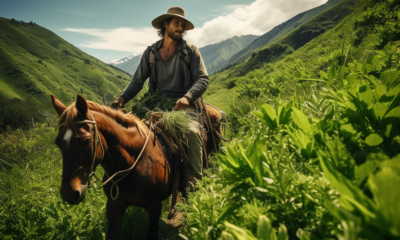
 Agriculture2 years ago
Agriculture2 years agoWhy Small Alternative Tropical Agriculture is the Best Investment Today
-

 Special Elements6 years ago
Special Elements6 years agoBest Garlic Vine Rankings, Benefits, Side Effects & Experience
-

 Special Elements3 years ago
Special Elements3 years agoBest Pre-Workout Supplement Rankings, Benefits, Side Effects & Experience
-

 Special Elements3 years ago
Special Elements3 years agoBest Cassava Manioc, Rankings, Benefits, Cancer Cure & Experience
-

 Special Elements4 years ago
Special Elements4 years agoBest Glutamine Rankings, Benefits, Side Effects & Experience
-
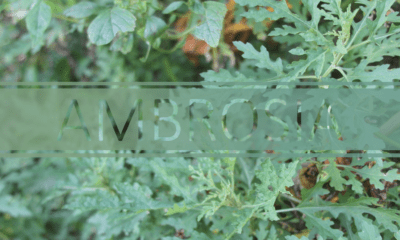
 Special Elements5 years ago
Special Elements5 years agoBest Ambrosia, Wormwood Rankings, Benefits, Side Effects & Experience
-
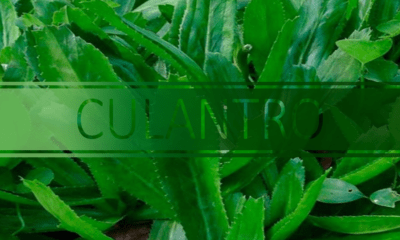
 Special Elements6 years ago
Special Elements6 years agoBest Culantro Rankings, Benefits, Side Effects & Experience
-
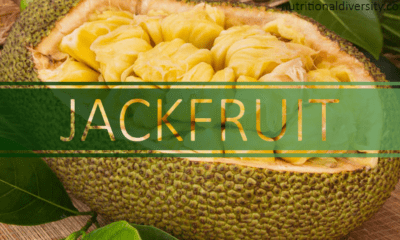
 Special Elements6 years ago
Special Elements6 years agoBest Jackfruit Rankings, Benefits, Side Effects & Experience














